When faced with an off-leash dog, have you ever wondered how you should react to ensure your safety and that of the canine approaching you?
There are practical strategies and techniques that can help you navigate such encounters effectively and confidently. Understanding the potential risks, recognizing signs of aggression, and knowing how to influence a dog's behavior can make a significant difference in how you handle the situation.
Stay tuned to discover the essential steps you need to take when approached by an off-leash dog.
Key Takeaways
- Recognize signs of aggression and fear in off-leash dogs.
- Minimize direct contact to avoid disease transmission risks.
- Stay calm, use barriers, and seek help if needed.
- Carry deterrent tools and be prepared with escape routes.
Recognizing Potential Dangers
When approached by an off-leash dog, always be vigilant in recognizing the potential dangers it may pose to your safety. Even seemingly friendly dogs can exhibit unpredictable behavior when off-leash, leading to serious injuries. Dogs may react aggressively when feeling threatened, putting you at risk.
Additionally, there's a potential for disease transmission, such as rabies, in these encounters. By staying alert and aware of the risks associated with off-leash dogs, you can better protect yourself.
Understanding Aggressive Behavior
To comprehend aggressive behavior in off-leash dogs, recognize the subtle signs indicating potential danger. Watch for stiff body language, raised fur, growling, bared teeth, or direct staring. These signs suggest the dog feels threatened and may react defensively. Be cautious around dogs exhibiting these behaviors, as they could escalate to aggression.
Dogs may also display signs of fear or anxiety before becoming aggressive, such as cowering, trembling, or attempting to retreat. Understanding these cues can help you assess the situation and respond appropriately. Remember, every dog is different, and their behavior can be unpredictable.
Stay alert and observant to protect yourself and handle the encounter with care.
Risk of Disease Transmission
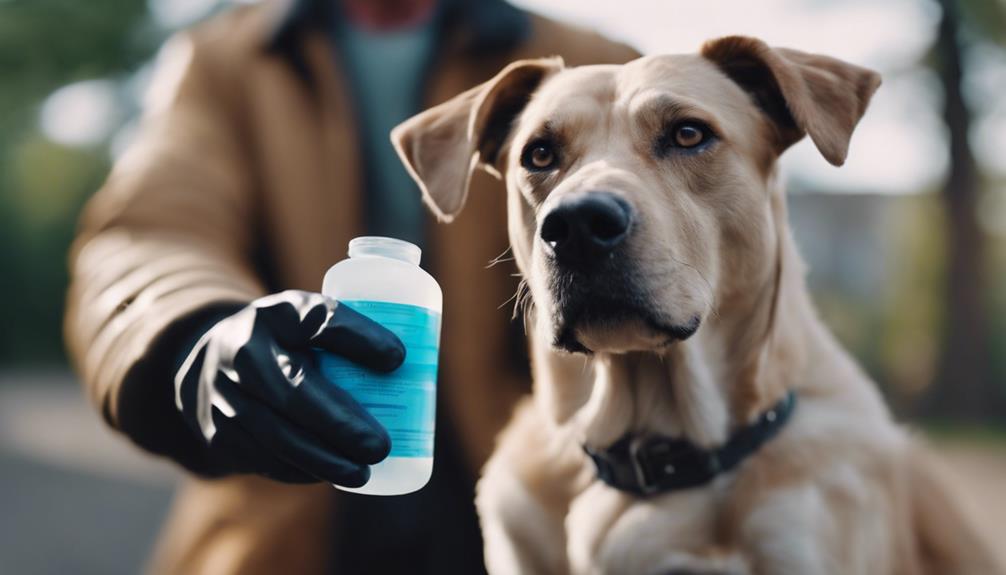
Beware of potential disease transmission risks when approached by an off-leash dog. Dogs can carry various diseases that are transmissible to humans through bites, scratches, or even casual contact. Rabies, in particular, is a severe concern as it's fatal if not treated promptly.
Additionally, other diseases like leptospirosis, parvovirus, and various parasites can also be transmitted. To minimize the risk of disease transmission, avoid close contact with the off-leash dog and refrain from petting or handling them.
If you do come into contact with the dog, make sure to wash the affected area thoroughly with soap and water. Stay vigilant and seek medical advice if you suspect any potential exposure to diseases.
Dealing With Unpredictable Behavior
During unexpected encounters with off-leash dogs, remaining alert and responsive is crucial in managing their unpredictable behavior. Watch for signs like stiff body language, raised fur, or growling, indicating potential aggression.
Stay calm and avoid sudden movements that could startle the dog. Speak calmly and firmly, using simple commands like 'sit' or 'stay' to assert control. Slowly back away while keeping the dog in sight.
If the dog approaches aggressively, use objects like your bag or jacket as a barrier. Avoid direct eye contact and high-pitched noises that may escalate the situation. Your composed and assertive demeanor can help de-escalate the encounter and facilitate a safe disengagement.
Carrying Treats for Distraction
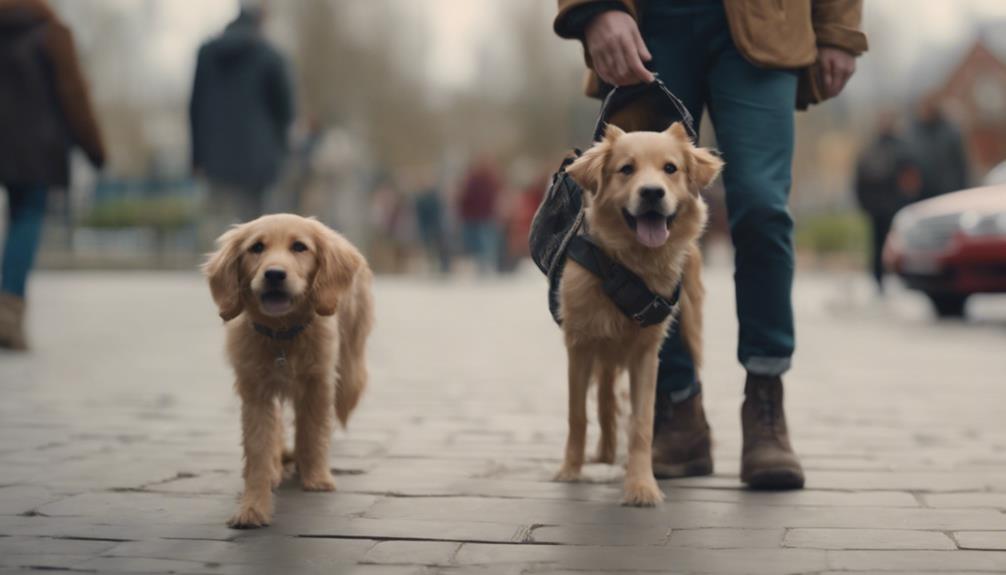
Carry treats consistently when encountering unfamiliar dogs to effectively distract and redirect their attention. Treats can be a valuable tool in diffusing tense situations and facilitating a peaceful exit strategy.
Here are some key points to keep in mind:
- Always have treats readily accessible
- Throw treats to divert the off-leash dog's focus
- Use treats to steer the dog's attention away from you
Having treats on hand can help in managing unexpected encounters with off-leash dogs and increase the chances of a safe and peaceful resolution.
Using Treats to Redirect Attention
How can treats be effectively used to redirect an off-leash dog's attention?
When faced with an off-leash dog, having treats on hand can be a game-changer. By tossing treats away from you, you can divert the dog's focus towards the tasty reward, giving you a chance to calmly move away. Treats serve as a positive distraction, helping to shift the dog's attention away from any potential threat they may perceive.
This redirection technique is a non-threatening way to handle the situation and can prevent escalating tensions. Remember, the goal is to create a peaceful exit strategy, and using treats to redirect the dog's attention can be a valuable tool in achieving that.
Implementing a Non-Confrontational Approach
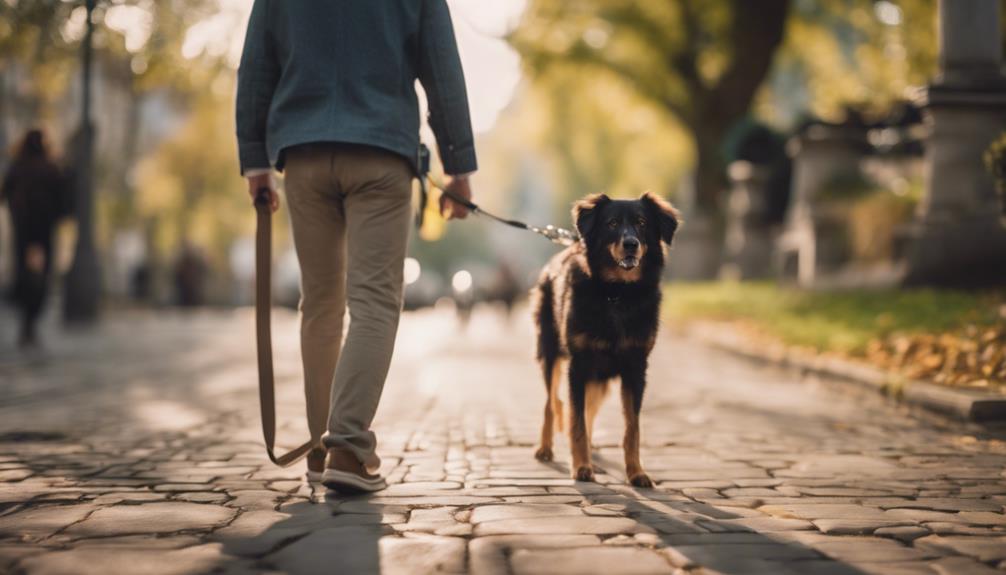
When faced with an off-leash dog, prioritizing a non-confrontational approach is key to ensuring safety and peace for both you and the dog.
To implement this approach effectively, remember the following:
- Avoid direct eye contact with the dog
- Move away slowly without turning your back
- Keep your focus on the off-leash dog for safety
Moving Away Safely
Are you aware of the importance of calmly moving away from an off-leash dog to ensure your safety and peace? When faced with an off-leash dog, your best course of action is to move away slowly and carefully. By maintaining a non-confrontational approach, you can reduce the risk of escalating the situation. Remember not to make sudden movements or turn your back on the dog. Here is a table to summarize key points for moving away safely:
| Moving Away Safely |
|---|
| Move slowly and calmly |
| Avoid direct eye contact |
| Keep the dog in your line of sight |
| Do not turn your back |
| Create distance without startling the dog |
Maintaining Calm and Controlled Behavior
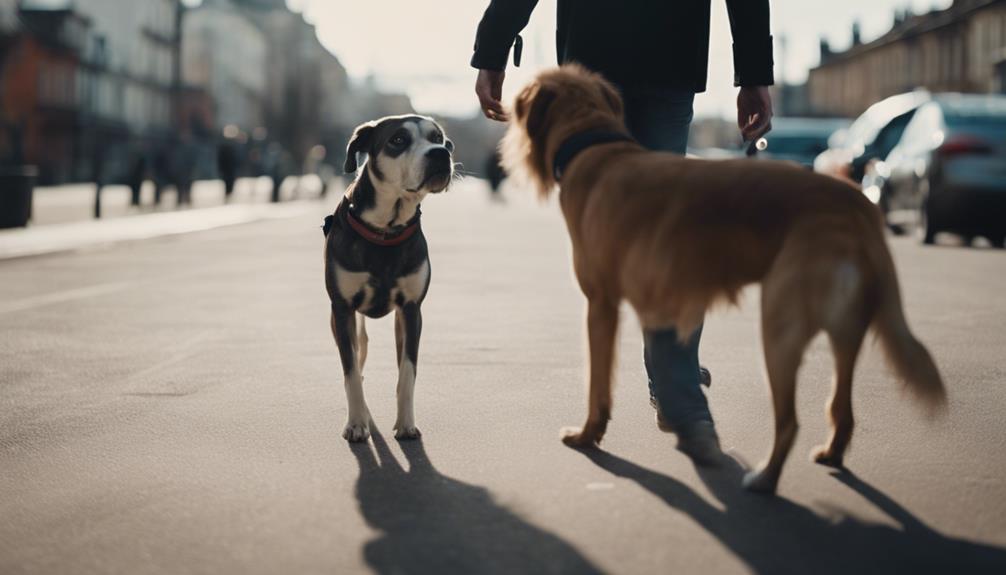
To maintain calm and control when encountering an off-leash dog, remember to stay composed and refrain from sudden movements or noises. It's crucial to exhibit calm behavior to prevent escalating the situation.
Here are some key points to help you handle the situation effectively:
- Remain still: Avoid making sudden movements that could startle the dog.
- Control your breathing: Take slow, deep breaths to help you stay calm and focused.
- Maintain eye contact: Keep a watchful eye on the dog's behavior without staring aggressively.
Influencing Dog's Behavior With Calmness
Influence the behavior of an off-leash dog by maintaining a calm and composed demeanor. Dogs are sensitive to human emotions, so staying calm can help de-escalate the situation. Your relaxed energy can signal to the dog that there's no threat, potentially calming them down as well.
Avoid sudden movements or loud noises, as these can trigger a defensive or aggressive response from the dog. By remaining tranquil, you're more likely to influence the dog to mirror your demeanor.
Using Assertive Commands
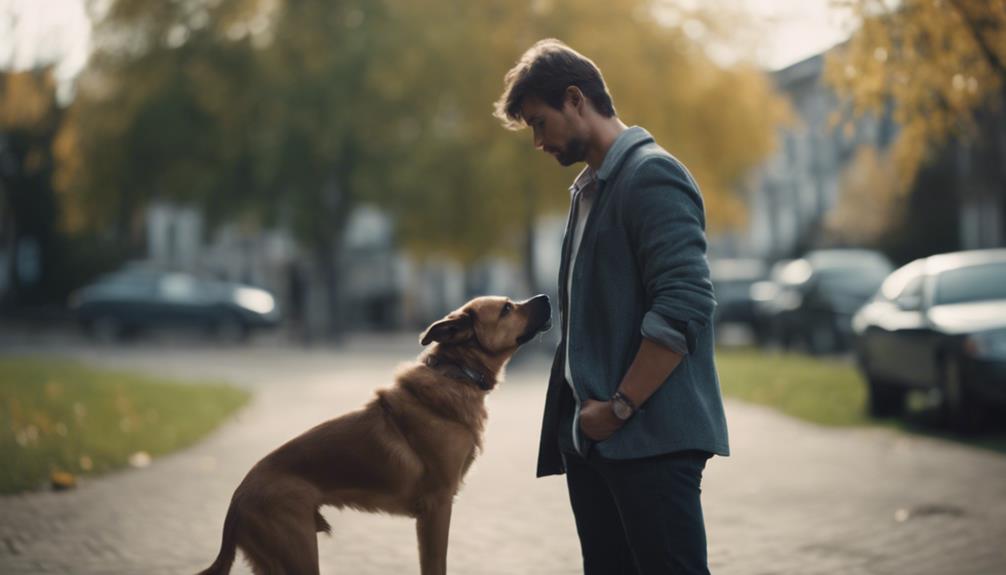
Assert your control over the situation by confidently issuing clear commands to the off-leash dog. When faced with this situation, remember to:
- Stand tall: Show confidence and assertiveness in your posture.
- Use a strong, firm voice: Command the dog with authority to sit or stay.
- Avoid running or sudden movements: Maintain your composure to avoid escalating the situation.
This approach can help establish your leadership and potentially diffuse the encounter.
Rewarding Compliance With Treats
When faced with an off-leash dog, rewarding compliance with treats can be a valuable tool in de-escalating the situation and ensuring a safe outcome. Carrying treats when encountering unfamiliar dogs is crucial.
By throwing treats to distract the off-leash dog, you can redirect its attention, creating a helpful distraction that can diffuse tense situations. This method not only facilitates a peaceful exit strategy but also minimizes the risk of aggression.
Treats serve as a useful way to manage unexpected encounters by rewarding the dog for following commands and cooperating. Remember, using treats to reward compliance is an effective and non-confrontational approach that can help you navigate encounters with off-leash dogs safely and calmly.
Ensuring Safe Exit Strategies
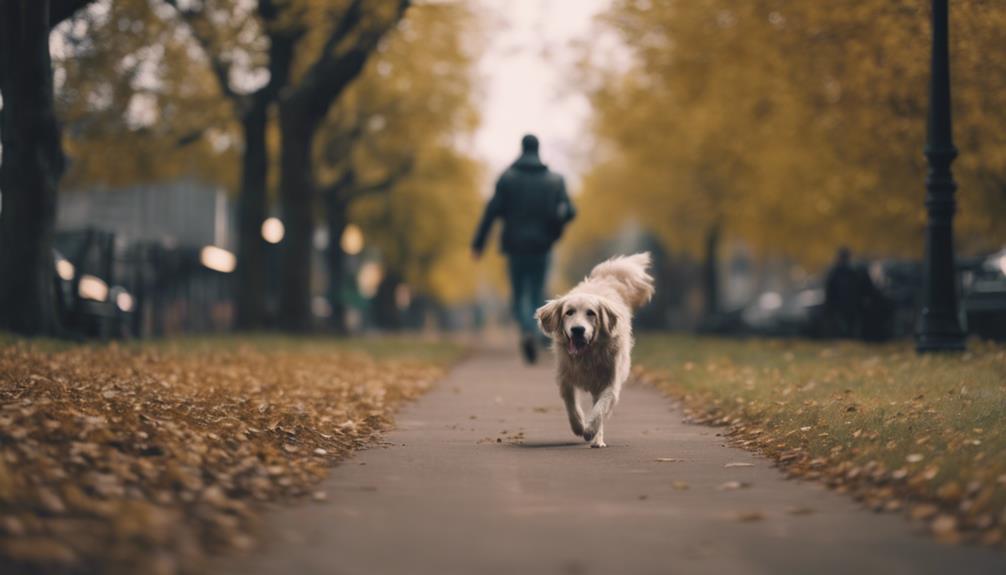
To ensure safe exit strategies when encountering an off-leash dog, maintaining a calm demeanor and avoiding sudden movements is crucial. Remember, the goal is to safely disengage from the situation without escalating tensions.
Here are some key points to consider:
- Slowly back away while keeping the dog in your peripheral vision.
- Don't run or make loud noises that could startle the dog.
- If possible, move towards a safe location like a car or building for protection.
Conclusion
In conclusion, when faced with an off-leash dog, it's important to stay calm, assertive, and prepared. By recognizing potential dangers, understanding aggressive behavior, and carrying treats for distraction, you can effectively manage the situation.
Remember to influence the dog's behavior with calmness, use assertive commands, and reward compliance with treats. Always prioritize your safety and have a plan in place for a safe exit strategy.
With these strategies in mind, you can confidently handle unexpected encounters with off-leash dogs.




